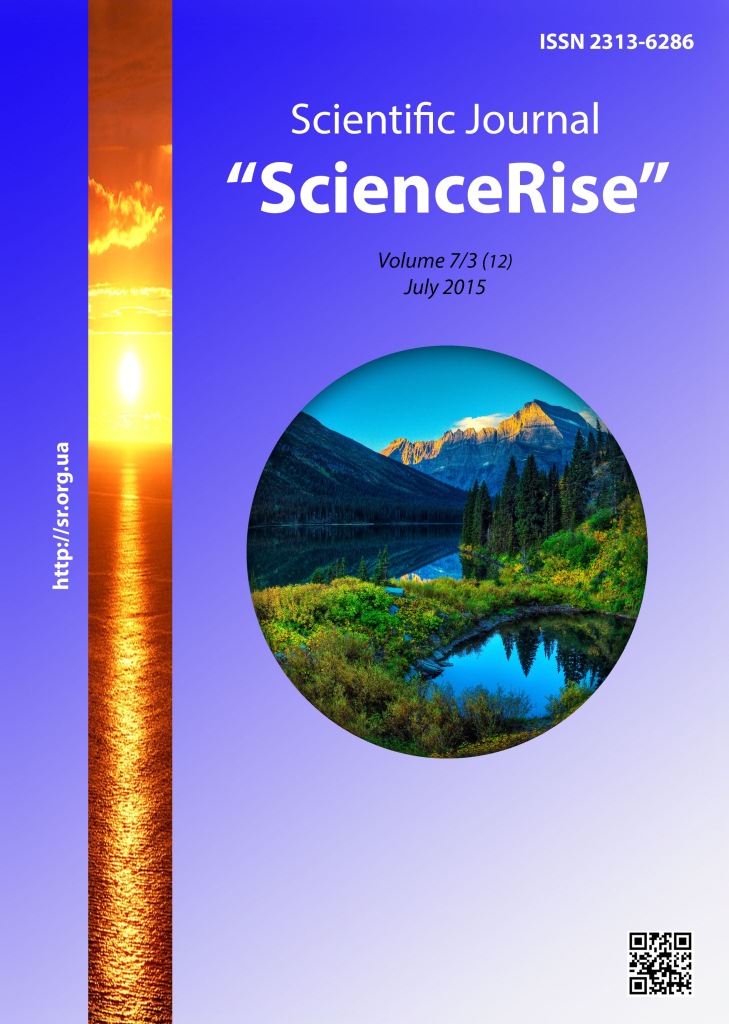Моделювання сталого розвитку міст для країн, що розвиваються
DOI:
https://doi.org/10.15587/2313-8416.2015.46590Ключові слова:
сталий розвиток міст, математичне моделювання, індикаторна структура, ієрархічна модельАнотація
У статті досліджується проблема моделювання сталого розвитку міст у країнах, що розвиваються. Запропоновано метод оцінювання, який базується на використанні складних ієрархічних індикаторних структур. Запропонована модель має п’ять рівнів та об’єднує три компоненти, десять індексів та 84 індикатори. У якості прикладу розглянуто місто Славутич, для якого було розраховано індекс сталого розвитку
Посилання
Soljanik, S., Zahvatkin, K. (1995). Idei Rimskogo. Vestnik «Zelenoe spasenie». Ustojchivoe razvitie: k istorii koncepcii, 3, 35–42.
Mahov, S. A. (2005). Matematicheskoe modelirovanie mirovoj dinamiki i ustojchivogo razvitija na primere modeli Forrestera. Preprint. Moscow: IPM im. M. V. Keldysha, 24.
Speth, G. (1980). The Global 2000 Report to the. Boston College Environmental Affairs Law Review, 8 (4). Available at: http://lawdigitalcommons.bc.edu/cgi/viewcontent.cgi?article=1792&context=ealr
Nashe obshhee budushhee (1987). Doklad Vsemirnoj komissii po voprosam okruzhajushhej sredy i razvitija na 42-oj sessii General'noj Assamblei. Organizacija Ob#edinennyh Nacij. Available at: http://www.un.org/ru/ga/pdf/brundtland.pdf
Kuznecova, Ju. A. (2013). Jetapy formirovanija i razvitija koncepcii ustojchivogo razvitija. Molodoj uchenyj, 5, 337–339.
Kuratov, S., Zahvatkin, K. (1995). Razocharovannyj razum. Vestnik «Zelenoe spasenie», 3, 43–52.
Korochkin, E. F. (2006). Materialy mezhdunarodnoj konferencii. Ustojchivoe razvitie: priroda – obshhestvo – chelovek, 1, 234.
The Urban Sustainability Index: A New Tool for Measuring China’s Cities (2010). The Urban China Initiative. Available at: http://urbanchinainitiative.typepad.com/files/usi.pdf
Key Performance Indicators for Eco Cities in the Asia-Pacific Region. Available at: http://sustainablecitiescollective.com/david-thorpe/256536/key-performance-indicators-eco-cities-asia-pacific-region
European Smart City Model. Available at: http://www.smart-cities.eu/index.php?cid=-1&ver=3
Analіz stalogo rozvitku: global'nij і regіonal'nij konteksti: monografіja. Mіzhnar. rada z nauki (ICSU) ta іn. Part 2 (2014). Kiev: NTUU «KPІ». Ukraina v іndikatorah stalogo rozvitku (2013), 172.
Petrovskij, A. B. (2009). Teorija prinjatija. Moscow: Izdatel'skij centr «Akademija», 400.
Spiekermann, K., Wegener, M. (2003). Modelling Urban Sustainabilty. International Journal of Urban Sciences, 7 (1), 47–64. doi: 10.1080/12265934.2003.9693522
##submission.downloads##
Опубліковано
Номер
Розділ
Ліцензія
Авторське право (c) 2015 Ксенія Олександрівна Ільченко, Анастасія Андріївна Лісогор

Ця робота ліцензується відповідно до Creative Commons Attribution 4.0 International License.
Наше видання використовує положення про авторські права Creative Commons CC BY для журналів відкритого доступу.
Автори, які публікуються у цьому журналі, погоджуються з наступними умовами:
1. Автори залишають за собою право на авторство своєї роботи та передають журналу право першої публікації цієї роботи на умовах ліцензії Creative Commons CC BY, котра дозволяє іншим особам вільно розповсюджувати опубліковану роботу з обов'язковим посиланням на авторів оригінальної роботи та першу публікацію роботи у цьому журналі.
2. Автори мають право укладати самостійні додаткові угоди щодо неексклюзивного розповсюдження роботи у тому вигляді, в якому вона була опублікована цим журналом (наприклад, розміщувати роботу в електронному сховищі установи або публікувати у складі монографії), за умови збереження посилання на першу публікацію роботи у цьому журналі.

